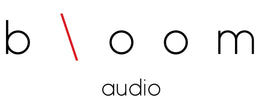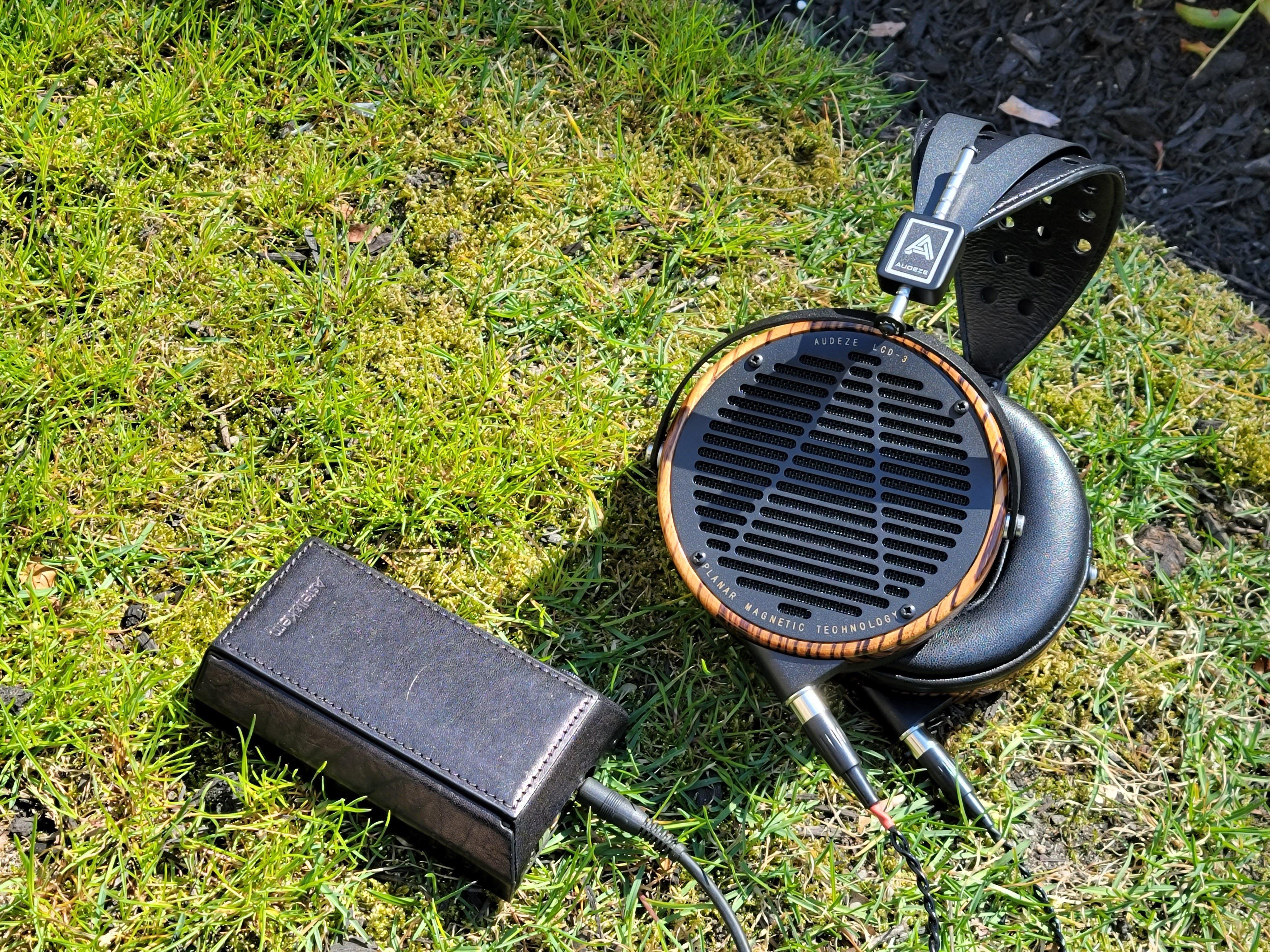Audeze tends to follow a “If it ain’t broke, don’t fix it.” policy when it comes to their headphone line, and also an “If it is broke, fix it in a secret revision to the model, but don’t tell anyone.” This is how, in 2021, we still have headphones like the LCD-2 (originally released in 2009) and the LCD-3 (originally released in 2011) as big parts of Audeze’s lineup, but with each having been refined over the course of the last decade in headphone development. With that in mind, let's take a look at the current version of the LCD-3, and see where it stands.
The Build and Design
The LCD-3 is made from a mix of leather, metal, and wood in the classic LCD series design. The design of the wood cups are one of the key ways you can tell Audeze models apart at a glance, and the LCD-3 is particularly striking with West African Zebrano hardwood trim. Of course, these aren’t light. The LCD-3 has a bit of heft to it, but the Audeze suspension design spreads the weight across your head quite well. The earpads are also quite comfortable and provide a good balance of softness and appropriate clamp force for a secure fit. If you find heavier headphones to be generally fatiguing though, the LCD-3 is going to give your neck a workout.
The package isn’t particularly extravagant, with the cable and case being the only things included in the box. The cable is good, if not particularly notable or spectacular. The case, however, is quite substantial and should be able to survive an apocalypse or two without allowing your headphones to be damaged.
The Sound
The LCD-3 has a lightning fast response, and an overall neutral leaning tuning. The bass is largely linear, and there’s a small recession in the upper mids and then a little bit of extra presence in the lower treble, but for the most part, the tuning feels flat and neutral. The sound stage is medium sized, and fairly even in depth, width, and height. The LCD-3’s speed and dynamics provide good layering and separation, and its all around raw technical capabilities are probably its strongest suit.
The LCD-3’s bass provides good texture and detail, without any muddiness or congestion, and has excellent speed and responsiveness. It has a good sense of impact, but it often takes just a little bit of coaxing to get its physical nature to come out of hiding. When it does, you get a deep, detailed, textured response.
The lower mids have a good amount of thickness and body, but there’s a small recession in the upper mids that can rob vocals of some of their presence and weight. This will largely depend on genres and preferences as with rock music, things like the upper range of a bass guitar or the lower range of an electric guitar sound full and strong, while a viola or saxophone might feel further back in the mix than intended.
The treble has a small bump – so you don’t totally forget about it – but isn’t a strong highlight. Overall the treble doesn’t have a lot of air, so things like the upper range of percussion and cymbals don’t have a lot of pop or splash.
After throwing a mix of music at the LCD-3 though, I find the tuning to be somewhat contextual and not without some issues. There’s the small recession in the upper mids that can make some vocals or instruments feel left out. There’s also sometimes a feeling of bass that’s just inches away from being amazing, but that doesn’t quite live up to its potential. There’s also some differences with different DACs and amps. I found that it got along with the Phonitor SE and Burson Conductor 3XP more so than the Questyle CMA Twelve. With DAPs, it sounded surprisingly good with the DX160 (if not as lively as with more powerful units), and the KANN Alpha honestly sounded as good as some of the desktop stuff.
All of this leads us to the issue of EQing. While I personally enjoy the tuning of the LCD-2 Classic and LCD-3 quite a bit out of the box, Audeze seems to almost beg you to EQ their headphones, with mostly flat, linear tunings that don’t come near pushing the full potential of their drivers. Just a small bump from 20kHz to 80kHz, with a peak at 50Hz just under 2dB, is enough to turn “almost there” bass into pulsing, thumping bass monster. Any concerns about the mids can also be tuned with just the softest of touches on an EQ. If you have the necessary gear or software, and are comfortable EQing, the LCD-3 can be just about anything you want it to be. It has loads of potential hiding just below the surface. For the remainder of the review though, I’ll base my thoughts on the stock tuning, not my personal EQ settings.
On fun’s “Some Nights” the Queen-like voices in the introduction surround the listener and demonstrate a large soundstage and precise imaging. The vocal presentation feels natural and transparent. While the drums through the verses give you a hint of impact, the electric drums that pop in on the second chorus give you a better taste of the depths of the LCD-3’s bass. The way different voices and instruments move on and off the stage throughout the song helps demonstrate the strong sense of layering and separation of the LCD-3.
“Spirits Will Collide” by Devin Townsend is anything but a straightforward rock song – from the massive overdubs on Devin’s voice to the choirs and orchestral instruments featured throughout – it’s absolutely epic in scale, and the LCD-3 delivers the epic. The vocals are crisp and well layered throughout, with little descants and countermelodies that would have been lost in a lesser set of cans laid out for you to hear. The guitars sound suitably monstrous. The drums are largely powerful and impactful, but the snare in particular has a bit of a dull wet thud, where it’s lost a little bit of the top end that should give it a tighter snap.
For a track that the LCD-3 absolutely nails, you can pull up John Coltrane’s “Naima” (I listened to the most recent remaster). The LCD-3 creates a lush three dimensional image of the band, with Coltrane and the piano on one side, the upright bass on the other, and the drums just behind the bass towards the center. The bass has a smooth texture and a deep physical punch. The saxophone is smooth and sweet, and the piano work is presented in a deft and delicate manner.
Listening through Manchester Collective’s The Centre is Everywhere with the LCD-3 you get a sense for its ability to deliver broad, dynamic passages, as well as its very natural presentation of instruments. The LCD-3 provides a very dynamic delivery to the ebb of flow of Manchester Collective’s arrangements of stringed instruments. There’s a strong sense of space, with the combination of the dark arrangements and the LCD-3 presentation giving me the feeling that I’m sitting in a wide open modern art gallery, flanked on all sides by cellos and violins.
Comparison: Focal Clear MG
It’s hardly a fair comparison. Audeze released the original LCD-3 10 years ago at this point – though they’ve been updated and tuned throughout the years – while the Clear MG is the latest high-end open-back headphone from Focal. But if you’re shopping for open-back headphones under $2000, Audeze and Focal are sure to pop up on your list, so let’s take a look at how these two stack up.
In terms of the packaging, Audeze gives you a practical and somewhat workmanlike package, with the headphones, a big sturdy case, and a 6.3mm cable. Focal gives you a sleeker package with a smaller – but fancier looking – travel case on top of both the balanced cable and the 6.3mm/3.5mm cable. If you plan on carrying your headphones through a warzone, the LCD-3’s case is clearly preferable, but for most uses, the Focal case is a tad more convenient.
Comfort is an even bigger difference. The LCD-3 is significantly heavier, but ultimately has a softer feel and fit. Focal generally wins the comfort competition, but their recent models have upped the clamp force, so depending on whether you’re more sensitive to the weight of the headphones or to something like a tighter clamping mechanism, one or the other could be preferable. The builds on the two headphones are too different to even try to make a comparison. Honestly, one or the other is going to have a stronger appeal, whether it’s the sleek French design or the American metal, leather, and wood, it will be entirely a matter of your personal preferences. Both are well built with quality materials.
The sound tells a different, but similar story. The Clear MG is easier to listen to, with a more laid-back sound, and a tuning that’s a little more consistent and doesn’t really have any characteristics that strike me as weird. The LCD-3 has a much more forward, in your face presentation. It’s interesting because I’m sure these headphones would measure very close to each other, but the end result, between the more brash LCD-3 and the smoother Clear MG is quite big when you swap back and forth.
There aren’t major differences in the soundstage or imaging, with both presenting well composed 3D images with good layering and separation. Clear MG might have a slightly larger feeling soundstage, while LCD-3 might have a stronger sense of separation between instruments, but the differences thera are fairly subtle. Listening back through some of the same tracks, I think I preferred the LCD-3 on the heavier rock and jazz tracks, while the Clear MG captured the classical and vocal pop tracks a little better.
One final difference – that isn’t something I usually cover – is that the LCD-3 handled the EQing much better. The same fairly subtle EQ I put on the LCD-3 ended up causing significant distortion on the Clear MG. I thought I had been careful before, and I was able to squeeze a little more bass out of the Clear MG without distortion, but I couldn’t push it nearly as hard as I did the LCD-3.
If you’re not looking to use EQ, both are great headphones, and this is definitely a competition that comes down much more to personal preference than anything else. Audeze has dialed in a sound that works really well for classic rock and jazz, and is also suitable for a broad variety of genres. Clear MG has a more versatile sound, but it’s really down to the look, feel, and sound that will work best for you.
The Bottom Line
While Audeze is constantly pushing planar magnetic technology forward, and implementing those technological changes in their headphones, the simple fact is, what sounded good ten years ago still sounds good today. Ten years down the road, the LCD-3 still captures a classic, powerful sound, and the latest version delivers it in a technically impressive and engaging way.









